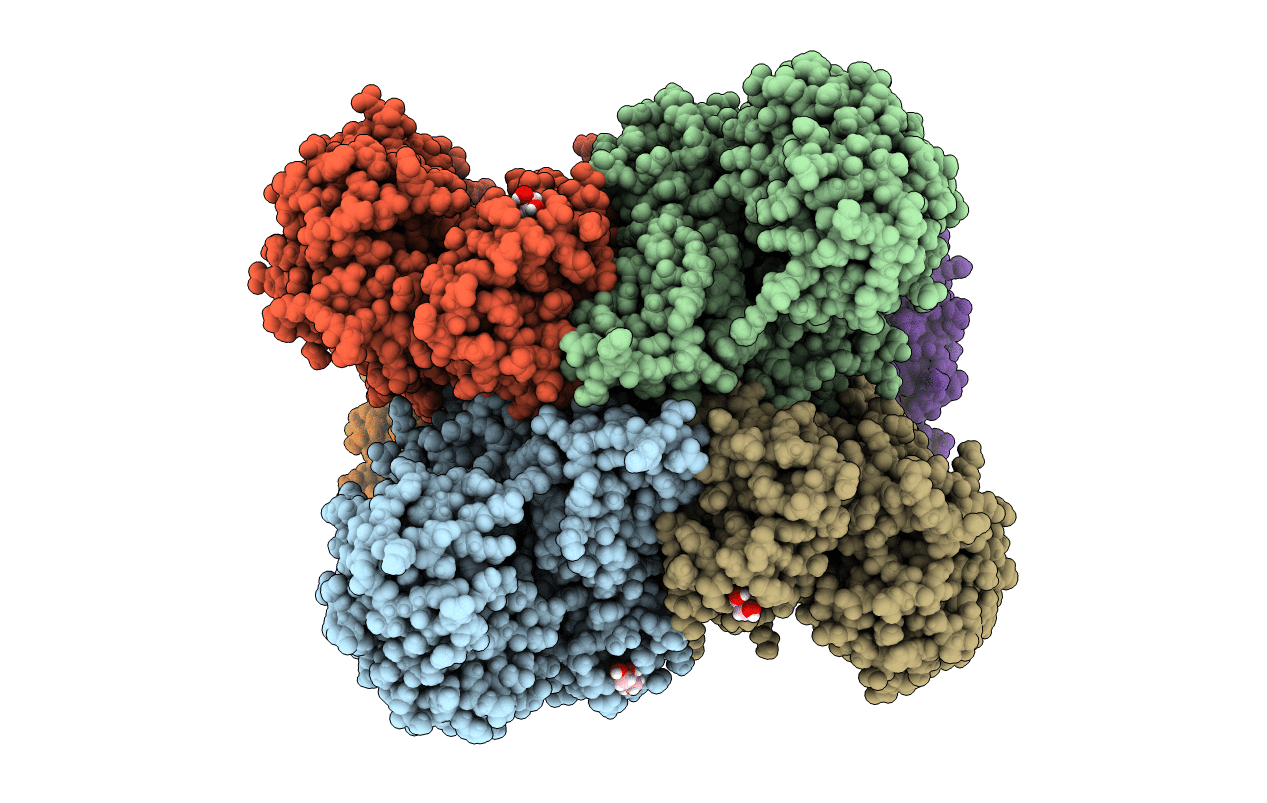
Deposition Date
2013-04-06
Release Date
2013-06-19
Last Version Date
2023-12-20
Entry Detail
PDB ID:
4BHT
Keywords:
Title:
Structural Determinants of Cofactor Specificity and Domain Flexibility in Bacterial Glutamate Dehydrogenases
Biological Source:
Source Organism:
ESCHERICHIA COLI (Taxon ID: 562)
Host Organism:
Method Details:
Experimental Method:
Resolution:
2.50 Å
R-Value Free:
0.22
R-Value Work:
0.15
R-Value Observed:
0.16
Space Group:
P 21 21 21


